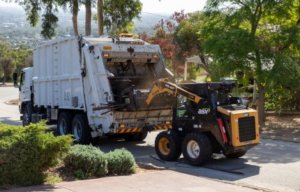Plumbers The Woodlands are skilled professionals who maintain, repair and install plumbing systems. They interpret blueprints and building codes, perform inspections and ensure plumbing fixtures like toilets, sinks, showers, water heaters and more are working properly.

This trade is a great choice for those who want a hands-on career with good salary potential and stability over the long term. The qualifications to become a plumber include training and licensing requirements.
In order to become a plumber, it is necessary to fulfill a number of educational and training requirements. These may vary by state, but most include completing an apprenticeship and passing a certification exam. Many also require work experience and specific skill sets. In addition to the technical requirements, plumbers should have good communication skills to effectively interact with clients and other contractors.
A high school diploma or equivalent is typically the minimum requirement for becoming a plumber. If you are interested in advancing your career in plumbing, it is also recommended to attend vocational school or a trade program. These programs offer more advanced education in the plumbing trade and can teach you about topics like local codes and regulations, blueprint reading, and plumbing system design.
Most states require apprentices to complete a four- to five-year program that includes both classroom instruction and paid on-the-job training. While the exact program requirements may vary by state, most include classes in areas such as pipe fabrication, plumbing systems, tools and their uses, and safety. Some programs also offer the opportunity to earn a college degree while completing an apprenticeship, which can make you more marketable as a plumber.
While on the job, apprentices must be supervised by a master plumber. After gaining the necessary work experience, you can apply to take a licensing test for a journeyman plumber position. To become a master plumber, you must have at least ten years of experience in the industry—five as an apprentice and five as a journeyman.
It is also a good idea to participate in continuing education courses and seminars in the plumbing industry, as new technologies and practices emerge regularly. These courses can keep you up-to-date on the latest in plumbing techniques and equipment and help you pass any future licensing exams.
Finally, it is important to be comfortable working in confined spaces and with a variety of hand and power tools. Coordination and problem-solving skills are also useful, as plumbers frequently operate in confined or unknown areas where they must navigate through pipes with little to no visibility. They may also encounter a variety of different materials, so it is important that they can adapt to the needs of each situation and repair the plumbing in the most effective way possible.
Licensing Requirements
Plumbers must be licensed in order to work on plumbing systems. Most states have requirements that vary by location, but most licenses require years of experience and education. Some states have additional requirements, such as passing an exam. Some require that candidates have a clean record, and others may have age or criminal restrictions. Plumbers also must have a valid driver’s license to operate company vehicles.
Many individuals interested in becoming plumbers complete an apprenticeship program. These programs typically last four or five years and provide on-the-job training while earning a regular paycheck. Apprentices must pass a background check and drug test, and meet minimum age requirements. Most states require that apprentices receive a certain number of credits from technical school in order to qualify for licensure.
Some plumbers are members of a union. Union plumbers earn a higher salary than those who are not members, and they have access to a variety of benefits, such as health insurance, vacation and sick pay, and retirement plans. Many of these benefits are negotiated by local unions, and unions often have their own apprenticeship programs.
Once a plumber has completed an apprenticeship and met state and local licensing requirements, she can begin working independently. She must have a license to perform plumbing and gas fitting and to contract for the installation of these systems. Licenses are issued by the Department of Labor and Training’s Plumbers and Irrigators branch. Individuals must pass a general trade knowledge exam and a plumbing-specific trade knowledge exam. The general trade knowledge exam consists of 45 equally weighted questions and isometric drawings, and the plumbing-specific trade knowledge exam consists of 65 equal-weighted questions.
Service plumbers work on plumbing systems in commercial and residential buildings. They must be able to understand building codes and provide cost estimates. They must also be able to respond quickly in emergency situations and possess good customer service skills.
Installers construct and repair pipe systems in residential, commercial and industrial buildings. They must be able to read blueprints and understand how different types of pipes are installed. They also need to know how to properly install fixtures and other equipment. They must be able to solder and braze metal and plastic, and use solvent welding and crimping techniques. Installers must also be able to perform plumbing system inspections and troubleshoot problems.
Training Requirements
Plumbing is an in-demand trade that requires specialized training. It can be learned through a trade school or vocational program, an apprenticeship, or on-the-job experience. In addition to the necessary technical skills, plumbers need customer service skills to interact with clients, explain the process of solving a problem, and answer questions about fees and costs.
Plumbers should be physically fit to perform their duties, which often involve heavy lifting and working in tight spaces. They must also be able to work well under pressure and be able to think critically when troubleshooting issues. Depending on where they live, some plumbers may need to travel between jobs and be available for emergency calls at any time, so having a flexible schedule is important.
Many states require plumbing technicians to be licensed, which involves passing an exam about the basics of the trade and local codes and regulations. Some apprentices go on to earn their journeyman’s license after gaining several years of experience under the supervision of a master plumber. Others choose to start their own businesses after they gain enough experience.
To become a licensed plumber, you must have at least four years of experience as an apprentice and two years of supervised experience as a journeyman. You must also pass an exam and meet other requirements, such as backflow testing certification and a criminal background check. Some cities, like New York City, have their own licensing processes that are separate from the state’s.
To get started on your path to becoming a licensed plumber, you can enroll in a vocational or community college program that offers courses in plumbing, pipe fitting, and other relevant subjects. Some programs last four or five years and offer both classroom instruction and paid on-the-job training. Others offer more specialized training in topics such as water heaters or sewer systems. If you choose the latter option, you’ll want to ensure that the program is accredited by a professional organization like the National Association of Plumbing Boards. You can find a list of accredited programs by searching online.
Job Duties
The job duties of a plumber involve installing, maintaining and troubleshooting plumbing systems. These include repairing and replacing plumbing fixtures such as toilets, showers, bathtubs, sinks and drains; installing new pipe lines for water, gas and sewage systems; and ensuring that all plumbing work meets building codes and regulations. Plumbers may also be responsible for the installation of backflow prevention devices and water heaters. Plumbers should be knowledgeable of various types of materials and have a strong understanding of the science behind water flow, as well as a firm grasp on building regulations.
There are many different career paths within the plumbing industry, and each position carries its own unique set of tasks and responsibilities. For example, a commercial plumber is usually responsible for the larger public plumbing systems found in places like schools, hospitals and shopping centers, while residential plumbers deal exclusively with household systems.
Both types of plumbers need to be comfortable working with tools and machinery, as well as have the physical strength required to lift heavy equipment. They also need excellent customer service skills, as they often respond to calls from people with emergencies such as clogged pipes and burst water heaters.
Plumbers need to be able to identify and diagnose problems quickly, and have the ability to come up with creative solutions on the fly. These problem-solving abilities are particularly important in cases where a plumbing system is old or damaged, or when there are unique circumstances that arise during a job.
Plumbers also spend a significant amount of time on routine maintenance. This involves inspecting existing pipes, testing the water pressure levels and identifying issues such as leaks or blockages. Depending on the plumbing company, this may involve documenting the condition of pipes and providing customers with recommendations for future maintenance. Finally, plumbers often need to collaborate with other tradespeople such as electricians and construction workers to ensure that all aspects of a project are handled correctly and in line with building codes and regulations. For this reason, it is important for plumbers to be able to communicate clearly and effectively with these professionals.

